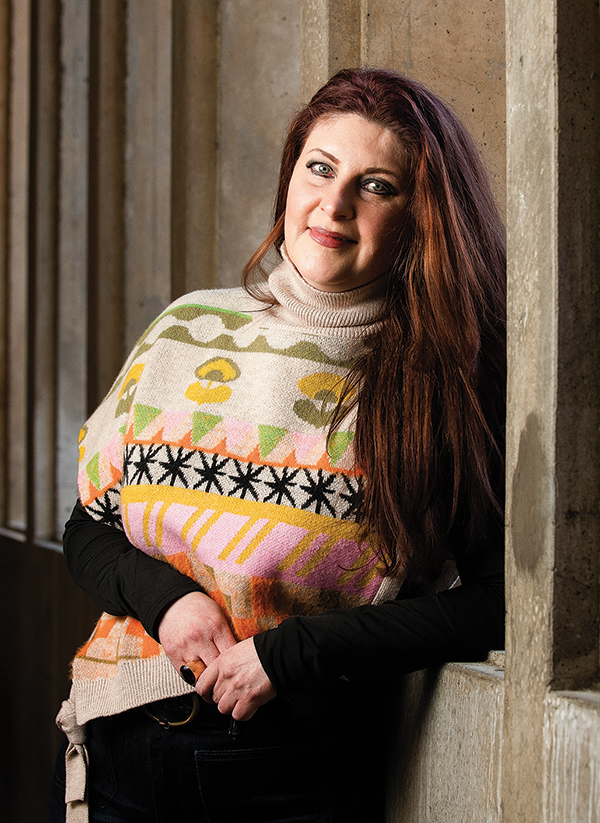Expert Q&A
Valuation of the Ephemeral: NFTs and the Art Marketplace
 Bought and sold online, non-fungible tokens (NFTs) are a crypto asset that represents digital and real-world objects. Think physical and digital art, music and media, and internet and pop-culture artifacts.
Bought and sold online, non-fungible tokens (NFTs) are a crypto asset that represents digital and real-world objects. Think physical and digital art, music and media, and internet and pop-culture artifacts.
The NFT market is valued around $41 billion, nipping at the heels of the $50 billion fine-art market. Because the value of cryptocurrency is fungible (mutually interchangeable with other digital currency) valuation of NFTs is beyond economic. With NFTs — crypto art, in particular — value is in the eye of the owner.
Art historian, professor and cultural critic Alison Pearlman says NFTs offer some new and not-so-new ways to buy, own and sell artworks
In the digital age, what does it mean to own or claim a piece of art?
Ownership of art in digital forms is not so different from ownership of some emergent art forms since the 1960s. As more works became ephemeral or open-series — not unique or limited-edition objects traditionally commoditized — art dealers developed contracts that, like NFTs, turned the seemingly unpossessable into unique commodities. They defined ownership in new ways, such as having the right to reconstruct or iterate a work. Owning the 1975 work by Sol LeWitt titled “Wall Drawing #260: On black walls, all two-part combinations of white arcs from corners and sides, and white straight, not-straight, and broken lines” means not having a physical drawing but rather the instructions and the right to generate their permutations — another unique asset.
The crypto-culture that spawned NFT artworks has offered new terms of sale that may be more favorable to artists. Some NFT marketplaces provide royalties to artists on re-sold work automatically. Built-in royalties and “smart contracts” allow NFT creators to sidestep lawyers, dealers and auctioneers.
Are NFTs a new way of purchasing and appreciating art?
NFTs have introduced new channels for socializing and marketing that align more with the rituals of digital culture than the established art world. NFT ownership may provide “membership” in a “club” that makes one part of a virtual social network and gives special access to events, information, discounts, or other NFTs, as well as marketing opportunities. These forms of ownership are modeled on social media and digital marketing.
Yet we should question whether this model is new fundamentally. In the traditional art world, ownership of a Sol LeWitt wall drawing similarly makes one a member of a club in the metaphoric sense. It also allows one to socialize with other members in ways just as real and global in reach.
What’s substantively new is how some NFT assets are structured. Take the PFP NFT, a type of NFT that can be used as a profile picture (PFP) on social media. These NFTs normally release in series. One can purchase one or more unique artworks in a series of up to 10,000. While some artists create handmade works, the capacity to offer 10,000 in a PFP NFT series encourages artworks designed by algorithm. CryptoPunks, 10,000 8-bit-style pixelated heads of misanthropic figures designed by Matt Hall and John Watkinson in 2017, is a famous example. The auction house Christie’s sold three of the works from CryptoPunks in 2021 as one NFT for $16,962,500.
Will NFTs change the institutional power dynamics in the art world?
In most ways, the market for NFTs behaves like other art markets, with analogous laws of supply and demand and the dynamics of building reputations. But players are entering the art market with new business models, and that has the potential to shift who dominates what market sectors and how the game is played.
The 2022 L.A. Art Fair featured an entire row of booths rented by NFT “curators” and “platforms.” With NFT contracts, artists have gained new opportunities for self-determination. The NFT market will also attract new kinds of buyers — crypto-investors and digital-culture enthusiasts. Their interests will shape the kind of art bought and sold, perhaps even what an art asset can be.
The extent to which new players will shift the distribution of power will depend on the extent to which well-established art-world players, such as the auction house Christie’s, get ahead of newer players in this frontier or whether new players, such as NFTG, which gives 90 percent of its proceeds to artists, prevail.
Ultimately, however, the extent to which purchasing, marketing, and experiencing art changes in response to the market for NFTs will depend on the normalization of cryptocurrency more broadly.